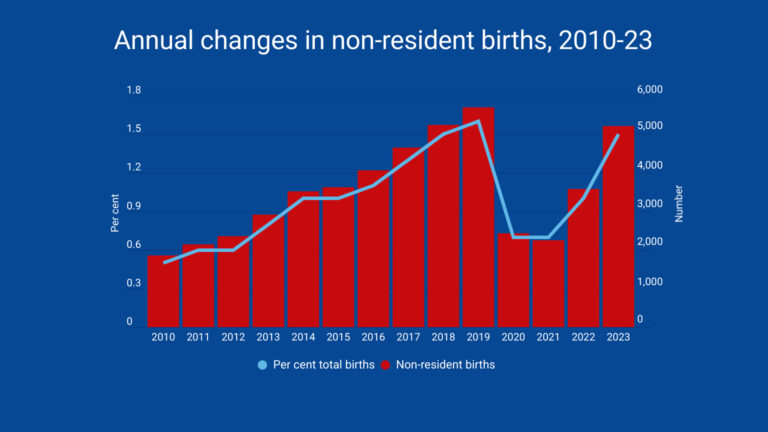Even while we are still dealing with the COVID-19 pandemic and vaccine challenges, we need to look ahead to rebuilding our economy after the public health crisis ends. In her spring budget, Finance Minister Chrystia Freeland will lay out the government’s vision of the path to economic recovery, and how to best rebuild our economy in a way that is sustainable, inclusive and resilient. One tool that has been proven over decades to build economic resilience and inclusivity, with a tremendous track record of success in the U.S. and U.K., is the employee ownership trust.
Employee ownership trusts are a way for business owners to sell all or part of their businesses to their employees. Their unique design means that employees do not pay directly for their shares while still allowing owners to sell at fair market value. Instead, loans allow the owners to be repaid out of company profits over time. In the U.S., these trusts have now been in place for 45 years with strong bipartisan support and have led to 14 million American workers sharing in US$1.4 trillion in wealth, generated from the companies they helped build. In 2014, the U.K. introduced its own framework for employee ownership trusts, and significant growth has followed through 2019, the last year for which numbers are available.
This model of employee ownership has been studied in great depth in the U.S. and the results are dramatic. Employee-owned companies grow faster; keep jobs in local communities at a higher rate; default on their debt less often; are more resilient in economic downturns and have an unambiguous record of producing wealth for lower- and middle-class workers. At a time when Canada is facing an upcoming wave of aging private business owners likely to sell their companies soon, employee ownership has also proven to be attractive options for them.
Canada has lower rates of employee ownership than the U.S. or Europe – a fact explained not by culture or economic conditions but by public policy. While Canada has some businesses (especially technology startups) that offer shares or stock options to employees beyond the management ranks, these are limited in scale and scope. Employee ownership trusts are distinct because they make it viable to transition existing companies to employee ownership and guarantee that all of a company’s employees benefit. They are also proven to scale quickly with supportive public policy. Removing the barriers to these trusts would produce clear benefits for Canada’s economic recovery.
Laying the foundation for an inclusive recovery
The effects of the pandemic on the economy have been deep and uneven. We have seen a widening divide between higher-income Canadians, who are more likely to be able to work from home, and lower-income workers, whose work is more likely to be affected by lockdowns or layoffs. We have seen uneven effects on businesses, disproportionately hitting sectors with high levels of female employment, small businesses and businesses owned by visible minorities.
The arrival of vaccines should permit the reopening of more hard-hit businesses over the course of 2021 but offers no protection against the longstanding economic trends – accelerated by the pandemic – that leave too many Canadians behind. In recent decades, workers in Canada and across the G20 have seen a declining share of total national income. Economic opportunity is also concentrated geographically in Canada, with some regions thriving, while others have seen their core employers shut down or move away.
Broad-based employee ownership leads to stronger, fairer economies
Ownership structure is important to shaping how the Canadian economy grows and who benefits from that growth. As baby boomers retire, seven in 10 private business owners are planning to sell in the next decade – businesses representing the majority of our economy. How they sell and to whom will have a significant long-term effect. As a result, the decisions we take today will help decide if this coming transition can lead to a fairer and more inclusive economy, or even more inequality.
Employee ownership trusts can help address Canada’s urgent business succession challenge. There are simply not enough local buyers for even stable, successful businesses – leaving them to either close or sell to predominantly international financial investors or competitors. Sales to competitors often lead to merging of head offices and the loss of good local jobs, while financial investors often aim to resell companies with five to seven years, leading to instability and a loss of resiliency. Employee ownership trusts offer another path that for many owners will better align with their values and devotion to their communities, making it possible for them to reward workers while selling for a fair market price.
Employee ownership trusts can also help close the wealth gap by letting frontline workers build wealth. The median net household wealth for American employee-owners is nearly twice that of comparable employees at traditionally owned firms. These effects are particularly pronounced for workers with lower incomes, women and people of colour. Black employee-owners have three times the median wealth of Black households in the U.S. In contrast to the debates in Canada over COVID-19 hazard pay, some workers at employee-owned Publix Super Markets in the U.S. have retired with over a million dollars in their ownership accounts. One longtime worker at the American supermarket chain WinCo Food Mart amassed nearly $1 million in company stock. This is a way to give essential workers a stake in the businesses they have kept running through the pandemic.
Companies with broad-based employee ownership are also good for local economies. Major “anchor” employers can have an outsized impact on the economies of small- and mid-sized cities. We have seen what happens when these businesses shut down or are acquired by foreign competitors. Employee-owned businesses are more likely to remain invested in the communities where they operate. The owners of businesses like Minnesota-based manufacturer Windings or Buehler’s Fresh Foods in Ohio cite loyalty to their communities as the reason they chose employee ownership as a succession plan.
Businesses owned by employee ownership trusts tend to be more resilient in the face of economic downturns. Looking back at the last two recessions in the U.S., employee-owned firms were much more stable, with fewer bankruptcies, mergers or layoffs. Early findings from the pandemic show that firms majority-owned by an employee ownership trust were three-to-four-times less likely to cut jobs than equivalents, and only about half as likely to cut hours or pay. Because they protect jobs, employee-owned firms are better positioned to bounce back and to save public funds because they lead to fewer unemployment claims.
Removing public policy barriers to employee ownership
Looking at the U.S. and U.K., where employee ownership trusts have been most successful, what has allowed them to grow has been a dedicated legal structure with clear rules and targeted incentives. A similar combination could allow for a significant increase in broad-based employee ownership in Canada.
At Social Capital Partners, we just partnered with the Healthcare of Ontario Pension Plan to finance the transition of U.S.-based Taylor Guitars to 100-per-cent employee ownership. But this type of transition is effectively impossible in Canada today. The Income Tax Act spells out 33 types of trusts, each with different features. But none of those trusts allows for all three features that need to be in place to allow an employee ownership trust to work: the ability to invest primarily in employer shares; the ability to hold those shares long-term (without tax penalties on employees); and the ability to borrow money to purchase those shares.
A new type of trust — a Canada employee share-ownership trust — could solve these challenges. A dedicated legal structure could provide operating clarity, and an “off-the-shelf” succession option for businesses to consider, as well as allow policy-makers to target benefits to match policy objectives.
Throughout the pandemic, we have heard from all corners about the need to build back better or build back stronger. This message has echoed across political and geographic divides in response to the social and economic impacts of COVID-19, the OECD has noted. As policy-makers look to craft a policy agenda to meet that challenge, employee ownership trusts offer a proven and ready approach.
Photo: Shutterstock.com, by gerasimov_foto_174












